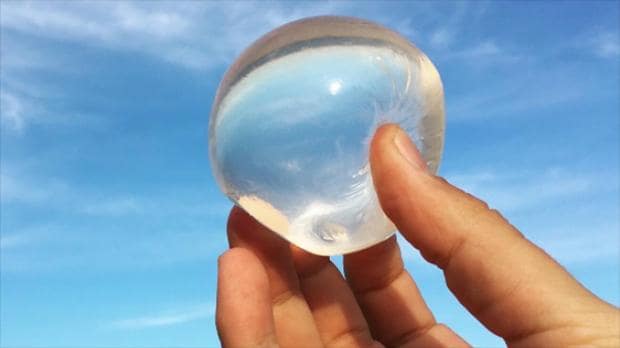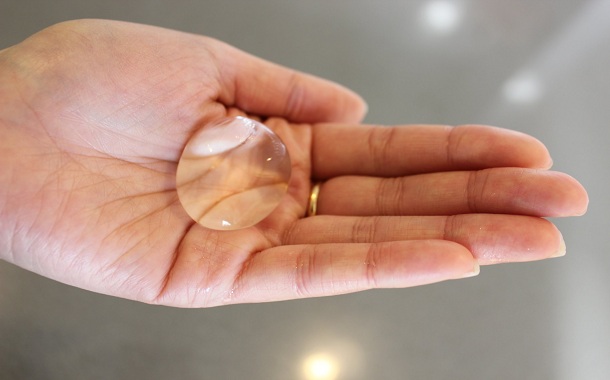Plastic bottles are everywhere. The unavailability of a decent alternative to plastic water bottles makes it more difficult for people to ditch them. But Ooho water bottles might be the coolest and most efficient alternative of all.
Ooho water bottles, or more appropriately, water containers are not made of plastic. The container is edible. Ooho is a blob-like water container made from sodium alginate gel.
The biodegradable blob was created by design student Rodrigo García González of Skipping Rocks Lab.
Instead of creating a bottle and then filling it with water, González, along with fellow Imperial College London students Pierre Paslier and Guillaume Couche, used a process that allows the bottle to take shape as it coalesces around the liquid.
The “Ooho” is a gelatinous, double-membrane sphere made by dropping ice into separate solutions of calcium salt and sodium alginate. The process, called spherification, is a technique patented by Unilever engineer William Peschardt in the 1940s. More recently the method was introduced into modernist cooking by Spanish chef Ferran Adrià. The process creates an edible, biodegradable capsule.
“The main point in manipulating the water as solid ice during the encapsulation is to make it possible to get bigger spheres and allow the calcium and algae to stay exclusively in the membrane,” González says.

González’s team has since gone through thousands of prototypes, testing them in Spain, Italy and Britain.
The biocompatibility of alginate gels has been studied extensively and their safety for consumption is well established. As natural polysaccharides resistant to breakdown by human digestive enzymes, alginates are classified as dietary fiber. Although undigested if eaten, the Ooho capsule will gradually decompose as the calcium diffuses out of the gel matrix.
The cute balls of water can be eaten as a mouthful and the membrane is reportedly tasteless.
Even with the Ooho’s fortified layers, González describes the container’s strength as comparable to the skin found on fruit.
“This is a problem we’re trying to address with a double container,” he says. “The idea is that we can pack several individual edible Oohos into a bigger Ooho container [to make] a thicker and more resistant membrane.”
Storing and packaging are some of the main challenges Ooho faces and is still working on it. But it is a revolutionary way to beat plastic pollution. The manufacturing process is covered under a Creative Commons license, making the recipe freely distributed and readily available for anyone to use.

